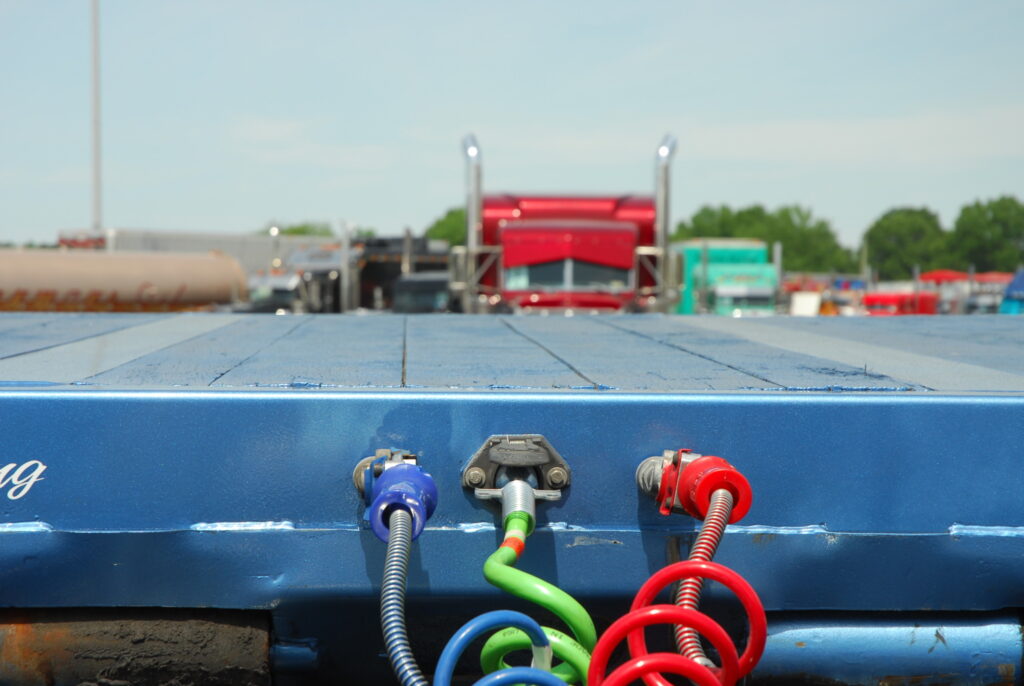Care for the air system that feeds your truck brakes
The emergency and supply lines that stretch between a tractor and trailer offer a colorful reminder that compressed air is the lifeblood of your brake system. The hoses are a respective red and blue, like arteries and veins in an anatomical drawing. That would make the compressor your air system’s heart; obstructions in the air lines like plaque that forms on an artery wall.
Maybe there should be little surprise that truck drivers often overlook brake hoses and tubing. People still die of preventable heart attacks.
The components will be under some added scrutiny in August as enforcement officials recognize Brake Safety Awareness Month. Brake Safety Week, hosted from Aug. 23-29, includes its own special focus on the all-important pathways for the air.
Bruce McKie, the president of Tectran – a producer of air, hydraulic, and electrical components – sees plenty of room for improvement where the tractor and trailer join together.
Air lines have been known to kink at the gladhand in the face of multiple hookups, he says as an example, making the case for spec’ing flexible hand grips that can help relieve the stresses. In contrast, a rigid grip will actually create troublesome sharp angles.
“People don’t think enough about the other reason for failure at the gladhand end, which is the stress on that section of the hose during hard right turns,” McKie adds. “Most hose connections are on the driver side of the tractor and trailer, making the distance to the trailer gladhand connection longer than during a left turn, particularly for the red, emergency line.”
Choosing proper hose lengths from a parts counter will clearly make a difference here. Some coiled lines available in today’s market are barely 15 feet long, even though they should measure 17 to 18 feet, he says.
The quality of the hose will make a difference as well. Cheaper versions may carry SAE or DOT markings, but fracture during cold impact tests, McKie says, referring to options that are sometimes made with reground rubber. That makes working with a trusted supplier particularly relevant.
High-quality air lines include multiple plies, which will make a difference in its ability to withstand forces such as temperature, road salt, and road debris, Petresh adds.
Even the newest trucks are not immune from hose-related issues. Some OEMs don’t look at the connections as part of a broader system, McKie insists. The end result can be unmatched tractor lead lengths between air and electrical lines, poorly attached clamps at the end of the spring tender kits, or a spring rate that fails to keep the air lines off the deck.
Issues like those can be solved by spec’ing the related air and electrical components, spring tenders, and gladhands as a complete kit, he says.
The threats of cuts, chafing and wear are not limited to the space between a tractor and trailer, of course. Poorly routed air lines anywhere across the vehicle can rub against all sorts of hard surfaces as equipment bounces and sways down the highway.
Petresh stresses the need to take a close look at the path for any newly installed hoses, and consider how things like suspension components will shift about as a truck rolls down the road.
“Too long, they can contact other parts of the vehicle, whether it’s a frame member or a suspension component,” he says.
